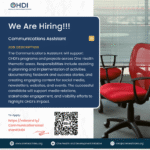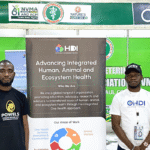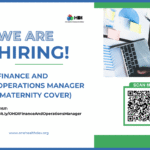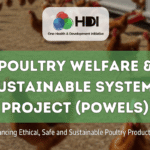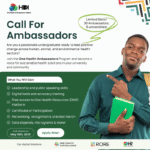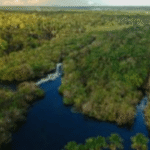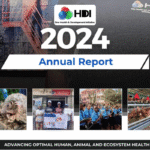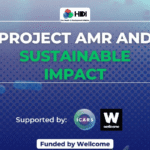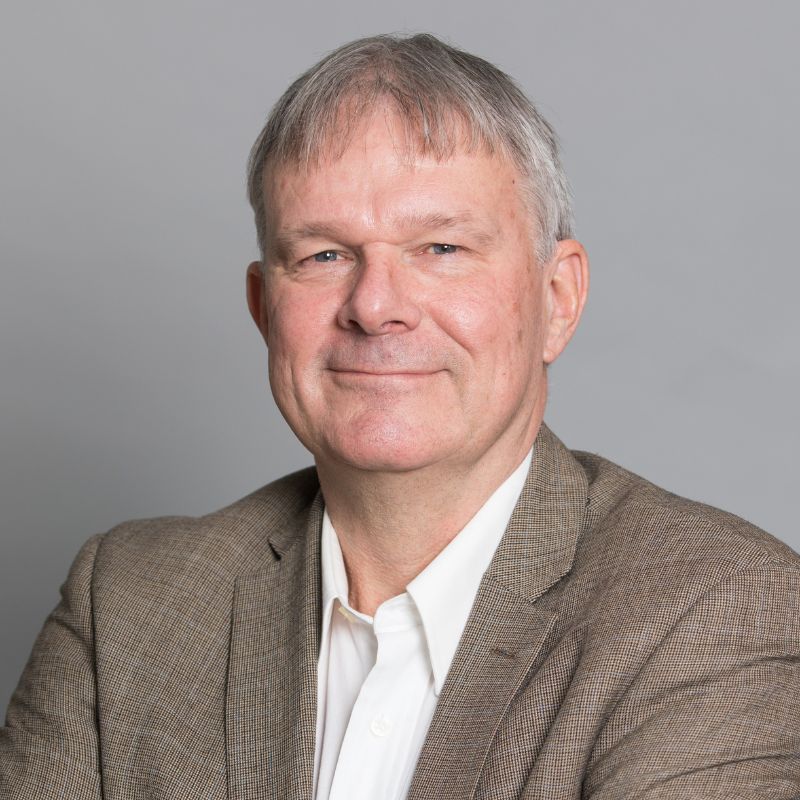
Meet Dr. Herman Barkema, our distinguished One Health personality of the month for September!
Dr. Herman Barkema is a professor and dairy veterinarian who has significantly advanced One Health initiatives. With a strong background in epidemiology and infectious diseases, Dr. Barkema has been pivotal in promoting collaborative research efforts across disciplines. In this exclusive interview with OHDI, he discusses his role in founding the AMR One Health Consortium and creating the world’s first United Nations University (UNU) Hub focused on water-related issues, emphasising the importance of global cooperation to tackle complex health challenges.
Please introduce yourself and tell us about your profession and educational background, particularly your past and current experiences in One Health initiatives.
I am a Veterinarian, specifically a dairy veterinarian. I completed my education at Utrecht University in the Netherlands. My first position at a university was at the University of Prince Edward Island. I was later asked to come to Calgary to help build the new veterinary school here. Our Faculty of Veterinary Medicine is co-located with the Cumming School of Medicine. After about a year, I was asked also to become a professor in Epidemiology of Infectious Diseases at the Cumming School of Medicine. This collaboration led to interactions with people in both faculties.
As veterinarians, we understand the importance of working with human medicine experts on certain diseases. My initial focus was on inflammatory bowel disease (Crohn’s disease), which has potential links to Johne’s disease in cattle. This was my first experience with a One Health collaboration. I then founded the Alberta Inflammatory Bowel Disease (IBD) Consortium, which brought together researchers at the University of Alberta and the University of Calgary with $5 million in funding to research these diseases. I really enjoyed leading this group, bringing together people from various backgrounds: epidemiologists, microbiologists, economists, veterinarians, and medical doctors, all working together. It was a lot of fun.
Mastitis is the most important reason for antimicrobial use in dairy cattle. My background in udder health of dairy cattle led to my current focus on antimicrobial resistance (AMR), which requires a One Health approach. Over time, I founded the AMR One Health Consortium, which is Alberta-wide and involves four universities and four colleges, with about 100 researchers. We secured $17.5 million in funding to research different aspects of AMR. Our focus was not just on basic and clinical research and epidemiology but also on policy development, as it is crucial to translate research findings into actionable policies.
We developed strong relationships with the chief veterinary officer, medical officers, and environmental experts in Alberta to work on One Health issues. I was also asked to lead a One Health initiative at the University of Calgary, One Health at Ucalgary, where we brought together people interested in various One Health-related issues. We focus on four main areas: infectious diseases and the microbiome, AMR, healthy ecosystems, and healthy water ecosystems.
Over time, I became increasingly interested in water, which was well aligned with the priorities of the University of Calgary, and we recruited many researchers to work on water-related projects. Last year, we became the world’s first United Nations University (UNU) Hub with a focus on water-related issues. Our water group has become so strong that we are creating a Water Institute at the University of Calgary.
How did your interest in the One Health approach develop, and how has it influenced your research? Can you share a pivotal moment in your career when you realised the importance of this collaborative approach?
I don’t think there was one specific moment; it happened over time. We need to work together to tackle these complex problems. One key moment for me was during my PhD when I worked on mastitis in the Netherlands with 300 dairy farms. At one point, I felt I could predict the bulk tank somatic cell count (equivalent to the percentage of white blood cells in milk) just by walking onto a farm. I talked to my supervisor, and he suggested working with a sociologist. I found a great sociologist at Wageningen University (Jan Douwe van der Ploeg), and we created a questionnaire for me to write down what I observed on the farms. This was my first real interaction with people from a completely different field (sociology) and my first step into qualitative research. I’m used to quantitative research as an epidemiologist, but this experience broadened my approach.
Working on issues like inflammatory bowel disease, Johne’s disease, and AMR, I realised more and more that we need people from different fields to address these complex problems. It’s not just about working with other epidemiologists and clinicians; it’s much more exciting when you bring in microbiologists, economists, or engineers. At the University of Calgary, I work closely with an excellent veterinary microbiologist, Jeroen De Buck, who approached issues from a completely different perspective, which was incredibly valuable.
Now, with the UNU Hub that we’ve established, I work with civil engineers, ecologists, people predicting water availability, and those working with indigenous communities. This is a realisation that we need diverse expertise to tackle these wicked problems, and it’s a lot more fun when we collaborate across disciplines.
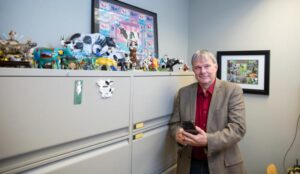
What inspired you to pursue a career in epidemiology and focus on infectious diseases in dairy farms?
What stands out throughout my career is people. I enjoy working with people, and my research with dairy farmers is for the farmers, with the farmers. That’s how I describe it. Also, we are privileged as university professors to work with bright young people from all over the world. Finally, I truly believe the only way to tackle the large issues we face globally is by working together with people from different countries, cultures, and backgrounds.
Take COVID-19, for example. Many countries focused solely on themselves during the pandemic, but bugs don’t stop at borders. We now see important mutations arising in countries lacking sufficient vaccines and healthcare infrastructure. We need to work together. Even if people in developed countries think only of themselves, we must realise that global cooperation is necessary, whether on AMR or other One Health topics. We have to support countries that don’t have the infrastructure or finances to address these issues on their own. I don’t believe in “America First” or “Canada First” because it’s dangerous to think that way. We need global cooperation.
Your research has led to changes in prevention and control programmes in various countries. Can you discuss a specific programme that had a significant impact?
One example is a project we did for the World Health Organization (WHO) on antimicrobial use in animals and its impact on AMR, both in animals and in people. That research led the WHO and various countries to change their policies regarding antimicrobial use in animals. This is just one of the projects I’ve worked on, but it had a considerable impact.
Currently, I’m also working with the Chinese dairy industry. In fact, we just published a paper on the opinions of large dairy farmers in China regarding antimicrobial use and AMR. China has both high levels of antimicrobial use and AMR. Through colleagues in China, we are working with large dairy companies to change the use of antimicrobials in the dairy sector there. I also work with groups in Brazil, Pakistan and Chile on these issues.
So, that’s a common theme in my work, helping to drive policy changes based on research findings. You can come up with great research findings, but if they don’t translate into policy, there’s no real impact. It’s similar to inventing something cool. It won’t have any effect if you cannot convince a company to bring it to market.
What are your biggest challenges in promoting the One Health approach within the animal health sector?
The biggest challenge is getting people to understand that they need to work together. It all boils down to one word: trust. We need to build trust, and that can only happen when people get to know each other and learn how to collaborate. Even in the medical field, veterinarians, doctors, dentists, and nurses are all educated in separate faculties, so they never meet or build trust during their education. Trust only develops when they start working together on issues like zoonotic diseases or AMR.
But it’s not just medicine. We also need to work with engineers, lawyers, and other professionals. Understanding what motivates them is essential because their priorities and interests differ entirely. For example, what matters to a veterinarian is often not the same as what’s important to a lawyer who writes policy. Building that trust only happens when you create opportunities for people to work together. Universities, for instance, often prioritise funding for transdisciplinary projects, which is crucial. The challenge is ensuring that everyone involved benefits from the collaboration.
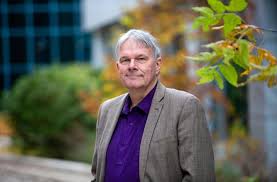
As the Scientific Director of the Antimicrobial Resistance (AMR) – One Health Consortium, how do you navigate the challenges of coordinating multidisciplinary research efforts to combat antimicrobial resistance?
I love it. Emerging zoonotic diseases, global warming, and AMR are hot topics, and everyone working in these areas understands their importance. There’s a shared understanding that we need to collaborate, and that’s now even true with governments. For example, I co-chair the Public Health Agency of Canada’s Advisory Committee on AMR, where we bring everyone together. We also just secured a $2.7 million training grant from the Canadian Institutes of Health Research to train people in AMR using a One Health approach.
Working with the government has been a lot of fun as they recognise the urgency of addressing this growing problem. I also work closely with the WHO, which has its challenges because it’s such a large organisation, but we now collaborate with great people there. We are currently leading a project on the prevalence of the 16 most important pathogens for human health (the GLASS pathogens), doing a large meta-analysis.
In that project, we have brought together people from all over the world: China, Nigeria, Iran, Colombia, the US, and our group in Canada. We’re also working with a great team in Indonesia. So, it’s truly a global collaboration. We have people from both veterinary and human health backgrounds working together. Bringing these diverse groups together has been a lot of fun. We have an annual meeting in Alberta, which has grown into a large conference involving industry players from diagnostics and pharmaceuticals, as well as government representatives.
I’m genuinely interested in people, and that’s what drives me. Working on significant issues like AMR, COVID-19, climate change, and water scarcity is incredibly rewarding. It can sometimes be frustrating, but it’s also so much fun.
In what ways can the One Health approach be further integrated into global health policies?
I believe we are on a train that cannot be stopped. Influential organisations like the Food and Agriculture Organization (FAO), World Health Organization (WHO), World Organisation for Animal Health (WOAH), and the United Nations (UN) now understand that if we want to achieve our Sustainable Development Goals (SDGs), we all need to work together, and it requires a One Health approach. We are making real progress, and I’m cautiously optimistic. We can stop the increase in AMR, address climate change, and collaborate more effectively when the next pandemic occurs. However, it will still be a challenge and will require significant effort.
Policies are made at the country level, but we need guidance from these large international organisations. Once the guidance is there, the only challenge will be ensuring they are implemented effectively within countries. It’s about setting the right priorities. For instance, I understand that in a country like Ukraine right now, climate change is not their top priority, and the same goes for Gaza or Israel. Urgent threats take priority, and it’s hard to make progress without trust. These conflicts don’t help, and we must address them if we want to work together.
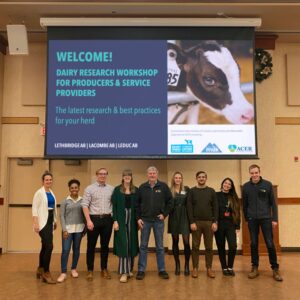
What advice would you give to young researchers interested in pursuing a career at the intersection of animal health and public health?
It is very important to travel. Make sure to take opportunities to work with people from different cultures and countries. It’s enriching and helps you understand the world and the issues we face. More importantly, it teaches you how to work together and build trust. People who haven’t travelled and don’t have passports often have limited perspectives. They are more likely to think about protecting their little world rather than collaborating with others. That’s where you get ideas like “America First” or similar attitudes, where people focus only on their interests. But when you travel, you realise that people everywhere are interested in the same thing; they just approach them from different angles. And that’s where the fun begins: working together and learning from one another.
So, travel, expose yourself to different perspectives, and work hard. If you care about solving these big problems, hard work is essential. Of course, there should be a balance between work and life, but it takes dedication if you’re truly passionate about addressing these issues.
What do you enjoy doing in your free time that helps you maintain a healthy balance between work and personal life?
When I hear “work-life balance,” I always think, and this may make me sound like a baby boomer: since when is work, not life? I feel privileged because I get a lot of enjoyment and fulfillment from my work. I don’t have a lot of time for hobbies outside of my work, but I don’t miss it. I get so much fun and satisfaction from what I do — meeting people, travelling, and being involved in meaningful work. I don’t feel the need for additional hobbies right now. Everyone’s balance is different. Some people might look at my schedule and think I don’t have balance, but I feel like I do. And that’s largely because what I do is enjoyable.
Importantly, my family is my anchor. My wife, daughters, and friends are incredibly important to me. Family is everything. When something happens in your family, it shakes you. It can affect your ability to find motivation or balance in your work. Also, I’m fortunate to have excellent friends inside and outside the university, both in Canada and the Netherlands and worldwide. I love spending time with them.


